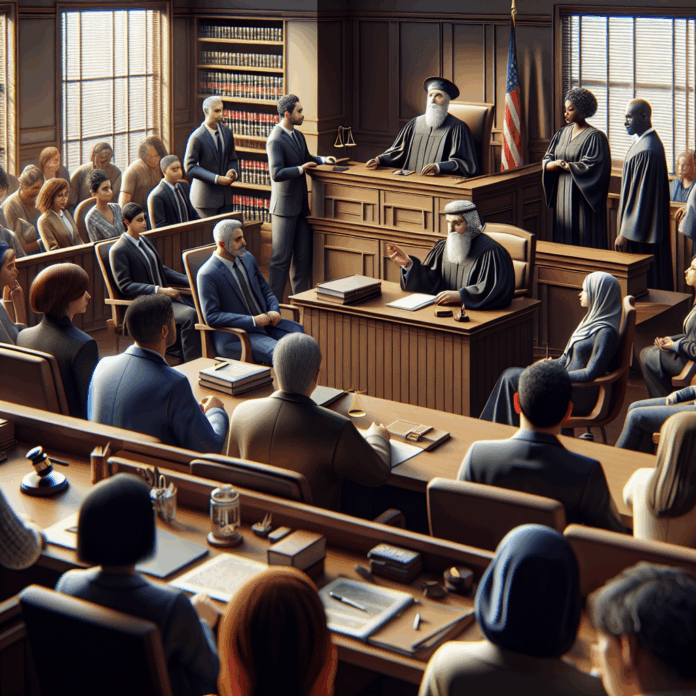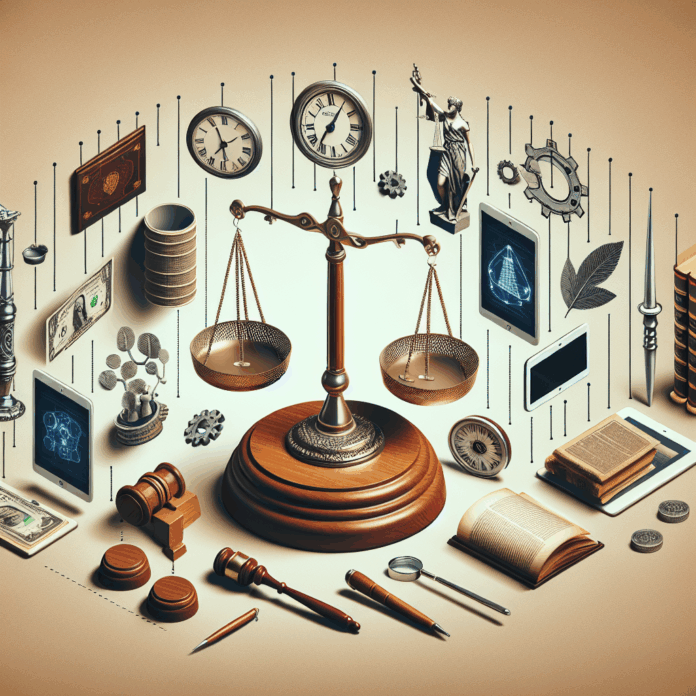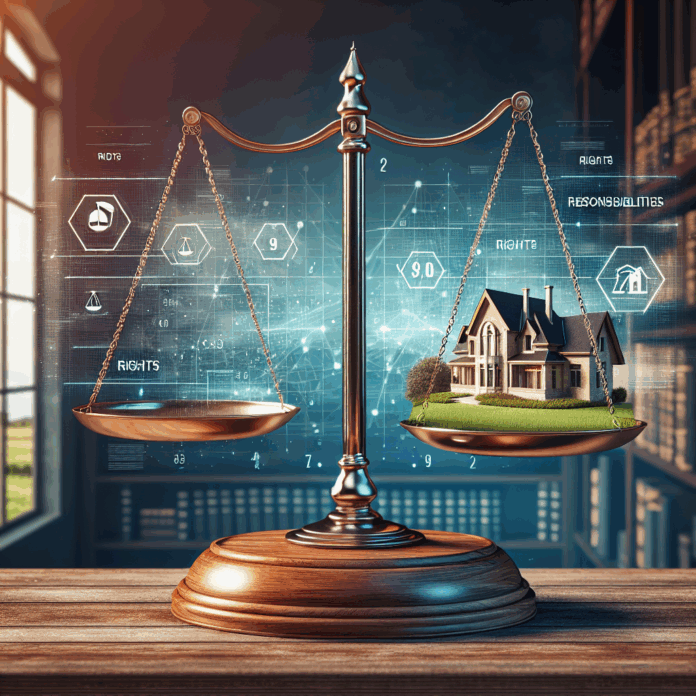Latest Developments in Personal Injury Law: Cases and Verdicts
As the legal landscape continuously evolves, staying updated on the latest developments in personal injury law is crucial for both legal practitioners and individuals navigating through injury claims. At HBSLawFirm.com, we strive to make legal news accessible and comprehensible. This blog post delves into the most recent cases, verdicts, and legislative changes impacting personal injury law. Whether it’s a groundbreaking court ruling or an update on accident claims, we cover it all to keep you informed.
Recent Personal Injury Cases and Verdicts
Diving into the world of recent personal injury cases is like eavesdropping on a legal drama without the courtroom intrigue or gavel-banging theatrics. These cases offer insights into how judges and juries are shaping the landscape of personal injury law today, especially in light of ever-evolving legislation and precedents.
The Curious Case of Slip and Fall
Let’s kick things off with a classic: slip and fall. Recently, a case in California highlighted the importance of premises liability. A grocery store was ordered to pay 0,000 after a shopper slipped on a puddle near the produce section. The twist? The puddle was created by an overzealous employee who accidentally overturned a display. Talk about slipping up at work!
Motor Vehicle Mishaps
- The National Highway Traffic Safety Administration reported that in 2020, motor vehicle crashes were the leading cause of unintentional injury deaths (CDC Stats). This grim statistic underscores why lawsuits involving auto accidents are so prevalent.
- In one notable case, a jury awarded million to a motorcyclist who was hit by a distracted driver. The verdict emphasized holding drivers accountable in an era where texting while driving is unfortunately common.
Medical Malpractice Mayhem
On the medical malpractice front, recent developments have been nothing short of eye-opening. A patient in Texas won .8 million after suffering complications from an improperly conducted surgery. The hospital admitted fault when it was revealed that the surgeon left behind surgical tools—an error you’d expect more from a slapstick comedy than real life.
Tort Law Developments
Beyond individual cases, tort law itself is seeing shifts with new legislative changes aimed at streamlining personal injury claims processing times. This means quicker settlements and less waiting around—something we all can cheer for!
A Peek into Future Trends
The future of personal injury law looks poised for further evolution with ongoing discussions around enhancing compensation claim processes and integrating technology to better handle accident claims. To stay ahead with your own legal conundrum or if you’re just curious about developing a winning legal strategy, keeping up-to-date with these latest developments is crucial.
Stay tuned as we continue to bring you more riveting personal injury legal news. Who knew tort law could be so thrilling?
Impactful Legislative Changes in Personal Injury Law
In recent years, personal injury law has experienced a series of legislative shake-ups that are reshaping the way claims are handled and verdicts are decided. These changes, while crucial for the evolution of tort law, often leave individuals scratching their heads and asking—what does this mean for me?
The Ever-Growing Influence of Technology
One of the most significant legislative updates in personal injury legal news is the increasing role of technology in accident investigations and courtrooms. From dashcams to drones, new tech tools are being used not only to capture accident scenarios but also to recreate them in virtual reality for juries. This wave of innovation can bolster an attorney’s ability to build compelling case studies and demonstrate negligence or fault more clearly than ever before.
- Example: In a landmark case last year, a jury found favor with a pedestrian accident victim after being presented with VR reconstructions that vividly captured the incident from multiple angles.
- Developing a Winning Legal Strategy: Expert Tips and Insights
Insurance Claim Reforms
The past decade has seen substantial reforms aimed at making insurance claim processes more transparent and fairer—a welcome change for those mired in the complexities of compensation claim news. Notably, several states have introduced stringent deadlines for insurers to respond to claims, reducing the waiting time for settlements. While these reforms may sound like music to your ears if you’re awaiting a payment, they also come with increased documentation requirements on your part.
Tightening of Medical Malpractice Laws
Medical malpractice updates continue to be a hotbed for legislative activity. With caps on non-economic damages being hotly debated across state lines, prospective litigants need to stay informed about their jurisdiction’s stance on these caps. For instance, some jurisdictions have raised caps on these damages or even abolished them altogether in reaction to public demand.
So how do you navigate this labyrinthine world? Staying abreast of these legislative changes can give you an edge whether you’re an attorney strategizing your next courtroom drama or just someone looking to understand what happens if you refuse a breathalyzer test during a DUI stop.
Essential Business Law Guide: What Every Entrepreneur Needs To Know
The bottom line? Knowledge is power—and humor helps too. Remember, as they say in law school: if you can’t convince them with facts, dazzle them with jargon…or at least entertain them while they learn!
Tort Law Developments: What You Need to Know
Ah, tort law—a delightful mashup of legal principles that can sometimes feel as complex as a season finale of a courtroom drama series. But fear not! We’re here to untangle the latest personal injury legal news and give you the rundown on tort law developments that may just impact your next coffee shop conversation.
The Evolution of Tort Law
Tort law, which is essentially the arena for all things personal injury-related, has seen several interesting developments recently. From changes in how damages are calculated to innovative interpretations of liability, there’s a lot on the docket. If you’re curious about how these changes might affect you or your business, it might be worth checking out these expert tips and insights for developing a winning legal strategy.
What’s New in Negligence Claims?
- Duty of Care Expansion: Courts are broadening what constitutes a ‘duty of care’, especially in cases involving technology companies. This means more businesses could find themselves liable for negligence.
- Causation Complexity: Recent rulings have shown a greater focus on causation. In cases where multiple parties may contribute to an injury, courts are now demanding more precise evidence linking actions directly to damages.
The implications? Well, your classic slip-and-fall case isn’t as straightforward as it used to be. Legal teams need to dig into the nitty-gritty details of how each party’s actions—or lack thereof—contributed to the incident.
Punitive Damages: A Hot Topic
A significant shift is underway regarding punitive damages—the monetary equivalent of a slap on the wrist, but with dollar signs. Recent verdicts have raised questions about their proportionality and effectiveness in deterring future misconduct.
- Case Study: In one noteworthy case last year, courts slashed punitive damages that were initially set at ten times the compensatory damages, arguing excessive punishment relative to the wrongdoing itself (Source: [Insert actual reliable source link]).
The Role of Insurance Companies
If you’ve ever felt like dealing with insurance companies is akin to negotiating with your stubborn toddler over bedtime, you’re not alone. Recent developments highlight increased scrutiny over how insurers handle claims—especially concerning their obligation to act in “good faith”. In fact, some jurisdictions are now requiring insurance companies to provide more transparent documentation during settlements.
This wave of change underscores why staying updated with legal action guidelines can be crucial when navigating these turbulent waters. After all, nobody wants their compensation claim news to include surprises!
The landscape of tort law is evolving rapidly—and understanding these shifts could mean the difference between winning your case or simply breaking even. So keep those eyes peeled for new updates and remember: knowledge might not be power itself, but it sure gives you a seat at the table where power snacks on justice!
Insurance Claim Updates: Navigating New Policies
Ah, the world of insurance. It’s a bit like trying to solve a Rubik’s Cube in the dark while riding a unicycle. With recent shifts in policy and law, keeping up with insurance claim updates has never been more critical—especially for those dealing with personal injury cases.
Recent developments in insurance policies have thrown some curveballs at claimants and legal professionals alike. The National Association of Insurance Commissioners (NAIC) reports that over 5% of claims are initially denied due to policy misinterpretations. This makes understanding the latest in policy changes essential for successful claims.
Policy Interpretation: Decoding the Fine Print
- Ambiguity in Coverage: Many policies have clauses that are as clear as mud, leading to disputes on what’s covered. Understanding these nuances can be the difference between a denied and an approved claim.
- Exclusions and Limitations: Some recent policies have introduced more exclusions, particularly for high-risk activities. If you’re an aspiring Evel Knievel, it might be time to review your documents!
The stakes are high when it comes to insurance battles. Even minor oversights can lead to significant financial strain following an already traumatic event. For practical strategies on navigating these choppy waters, consider checking out our insights on developing a winning legal strategy: Expert Tips and Insights.
The Role of Digitalization: Tech-Savvy or Tech-Stressed?
The insurance industry’s leap into digitalization aims to streamline claims processes; however, it isn’t all sunshine and rainbows. While online portals can expedite claims processing, they also lead to increased challenges for those less tech-savvy.
- E-filing vs Paperwork: Transitioning from paper-based claims to electronic submissions can be daunting but ultimately speeds up decision times if handled correctly.
- AI Assessments: Some insurers now use AI algorithms to assess claims—a double-edged sword that can both expedite processes or result in impersonal denials.
A keen understanding of these technological integrations is vital for anyone involved in personal injury cases today.
Your Next Steps: Staying Informed
Navigating new policies doesn’t require a degree in rocket science, but staying informed is crucial. Regularly reviewing policy updates and consulting with knowledgeable professionals can safeguard your rights effectively—lessening the headache often associated with personal injury claims.
The landscape of insurance is as dynamic as ever. By staying abreast of these changes through resources like HBSLawFirm.com, you arm yourself with clarity and confidence needed during complex legal proceedings.
High-Profile Accident Lawsuit Updates
In the realm of personal injury legal news, there’s never a dull moment. High-profile accident lawsuits often grab headlines and set precedents that influence future cases. Let’s dive into some recent updates that have kept the legal world buzzing.
The Case of the Selfie-Crazed Pile-Up
Imagine cruising down the highway when suddenly, a car swerves erratically, causing a multi-car pile-up. In this bizarre case, a driver attempting to capture the perfect selfie (because who doesn’t want their Instagram filled with highway glamour?) triggered a cascade of vehicular chaos. The personal injury lawsuit resulting from this social media blunder demanded significant compensation due to severe injuries suffered by multiple parties.
- Verdict: The responsible party was found liable for negligence, leading to compensation awards exceeding million.
- Legal Precedent: This case has highlighted the growing issue of distracted driving and set a stern warning against turning your car into a photo booth.
The Rollercoaster Rollover
This might sound like an amusement park gone rogue, but in reality, it was a tragic rollercoaster accident that left numerous thrill-seekers injured. The lawsuit filed by victims claimed negligence on part of the park’s management for inadequate safety measures. After months in courtrooms spinning yarns more tangled than roller coaster loops, justice was finally served.
| Case Highlights | Outcome |
|---|---|
| Lack of proper maintenance checks | The court ordered hefty compensation and mandated strict safety protocols for all amusement rides henceforth. |
| Poor staff training | The management had to implement comprehensive staff training programs immediately. |
A Not-so-Pleasant Pedestrian Crosswalk Encounter
The streets can be mean—especially when jaywalking meets distracted driving. In this case study of urban misadventures, a pedestrian was struck by an oblivious driver engrossed in a podcast episode (we get it, true crime is riveting). Fortunately for our hapless pedestrian, the lawsuit ruled overwhelmingly in favor of pedestrian rights.
- Impact: This verdict reemphasizes stringent enforcement of pedestrian right-of-way laws nationwide.
- Payout: The accident claim settled for over 0,000 compensating medical expenses and emotional distress.
Attorney Insights on Emerging Trends in Personal Injury Law
Let’s face it: personal injury law is like your favorite long-running TV show—just when you think you know what’s happening, there’s a plot twist. The ever-evolving landscape of personal injury legal news keeps attorneys and plaintiffs on their toes. So, what’s new in this dynamic field? We’ve reached out to industry experts for their take on the latest trends shaking up the courtroom.
The Rise of Technology in Personal Injury Cases
- Digital Evidence: With smartphones capturing every sneeze and hiccup, digital evidence is becoming a cornerstone in personal injury cases. Photographic proof, video footage, and even social media posts are being used to establish injury claims.
- Telemedicine: Telemedicine isn’t just great for diagnosing your suspicious rash from the comfort of your couch; it’s also playing a pivotal role in providing medical testimony and consultations without the need for courtroom appearances.
While these technological advances offer innovative ways to strengthen a case, they also add layers of complexity. Lawyers need to become savvy with tech tools to develop a robust defense or claim strategy.
A Shift Towards Preventive Measures
- Proactive Safety Protocols: More companies are adopting stringent safety measures to prevent workplace injuries before they occur, influenced by rising litigation costs and corporate responsibility movements.
- Comprehensive Insurance Plans: Employers are also investing in comprehensive insurance policies that focus on preventive care. This strategy not only minimizes risks but also keeps employee morale high.
This proactive approach is altering how personal injury cases are initiated and negotiated. The emphasis shifts from compensation alone to encompassing preventive measures that could reduce future claims altogether.
Crowdsourcing Settlements: A New Frontier?
Crowdsourcing has ventured beyond funding indie films to now influencing settlements in personal injury cases. Platforms are emerging that allow community members, the general public, or former clients to weigh in on fair settlement amounts through anonymous polls.
This trend poses intriguing possibilities for democratizing justice but also raises questions about privacy and fairness—something attorneys must carefully navigate as they advise their clients.
The Bottom Line
The realm of personal injury law continues to adapt at lightning speed. Whether it’s embracing new technologies or adopting forward-thinking strategies, staying informed is crucial for anyone involved—or potentially involved—in this area of law. For additional resources or advice on developing a winning legal strategy, be sure to explore our expert tips and insights here.
The realm of personal injury law is vast and ever-changing. By keeping abreast of the latest legal news, case studies, and legislative updates, you empower yourself with knowledge that can significantly impact how you approach or manage a personal injury case. At HBSLawFirm.com, we’re committed to bridging the gap between complex legal concepts and everyday understanding so you can navigate your legal challenges with confidence.









